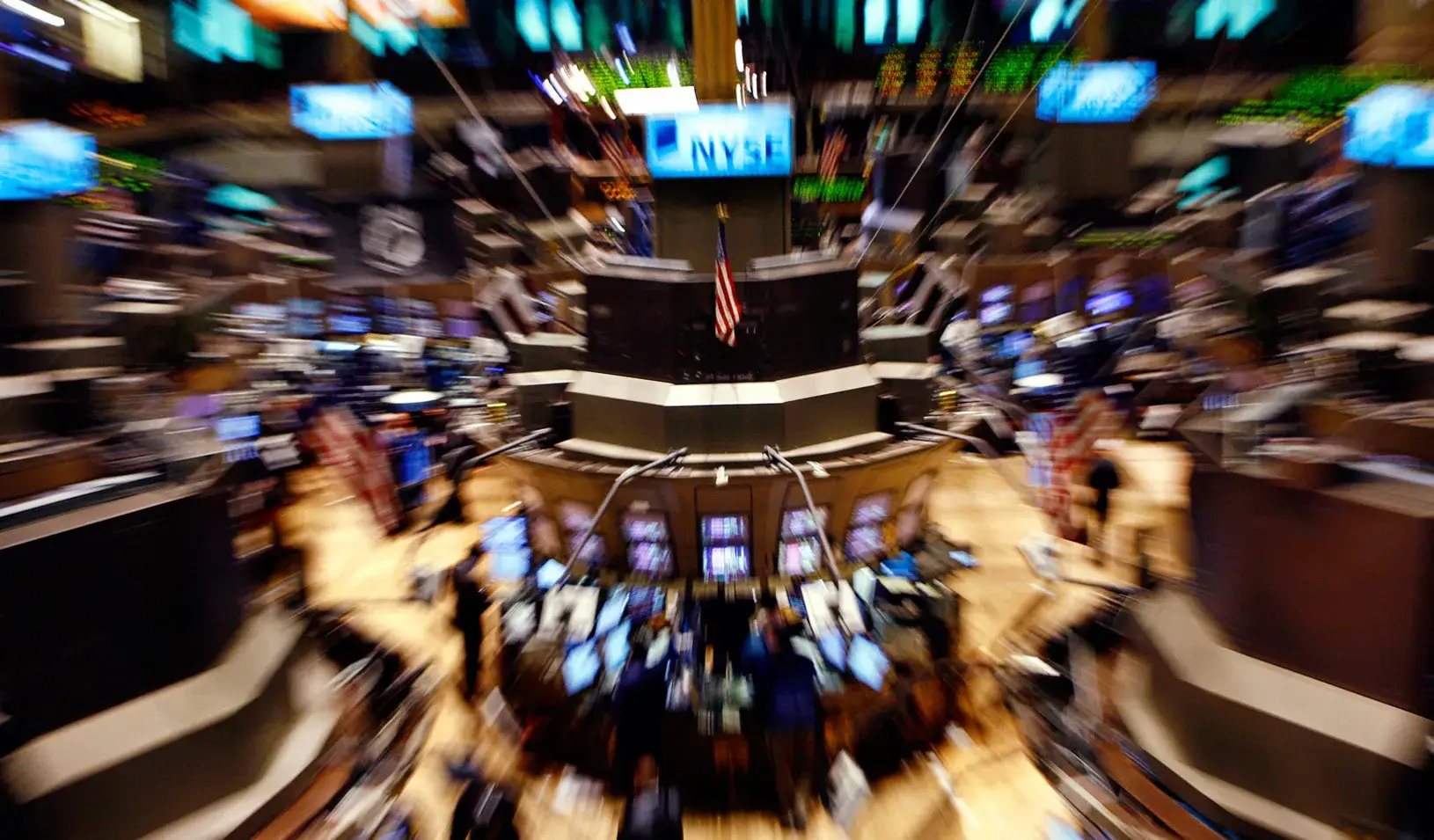William Sharpe: How to Invest In a Turbulent Market
A Nobel Prize winner says preparing for retirement means keeping an eye on investment costs and not looking to the market for sympathy.
April 18, 2013

The floor of the New York Stock Exchange, 2007 (Reuters photo by Shannon Stapleton)
“Ten thousand baby boomers are retiring every day, and every part of the financial industry is lusting after their money – offering products and services of all kinds,” says William Sharpe, who won the Nobel Memorial Prize for economics in 1990, and is now a professor emeritus of finance at Stanford Graduate School of Business. “In the old days,” he says, “you got a pension, a Social Security check, or both and had no investment decisions to make. Your choices were pretty clear-cut. Now they’re not, and people saving and investing for retirement are begging for answers.”
Sensing an opportunity to supply those answers, Sharpe in 1990 co-founded Financial Engines Inc., a Sunnyvale, Calif.-based firm that provides advisory services to the retirement plans of Fortune 500 companies. Now retired from his company and the university, Sharpe still writes and lectures frequently on what he calls “retirement economics.” He recently published an article titled “The Arithmetic of Investment Expenses” in the Financial Analysts Journal that shows retirees how much more money they could have in retirement by avoiding actively managed funds in favor of index-oriented funds.
Sharpe spoke to Bill Snyder about retirement strategies and lessons learned (or not learned) from the financial meltdown of 2007.
What did we learn from the crash and subsequent recovery that’s useful for investors and future retirees to know?
One answer is that investments in stocks really can be very risky and that an investor had better recognize this in advance. On the other hand, we don’t have centuries of relevant experience to know the precise future likelihood of a repeat of such a severe meltdown. As always, the best we can do is to estimate the range of possible future returns, using both history and sensible economics.
If that’s the case, why do so many large pensions assume that they will make returns of 7 percent or 8 percent a year?
I wrote a piece called “Financial Planning in Fantasyland” [in 1997] in which I railed about software models provided for people saving for retirement that assumed, as some pension actuaries still do, that stocks would provide the same return every single year. That’s crazy. And anyone who tells you the exact amount you can earn investing in the stock market for the next 20 years or 30 years is either crazy or intentionally misleading you.
That’s rather harsh. Hasn’t there been any improvement in the models that are out there?
Yes. Fortunately we’re seeing [much better] models in online retirement-planning software. Many people in the investment industry have accepted the fact that individual investors need to understand that with investment risk comes uncertainty about retirement income.
In some of your earlier writings, you talk about the four pillars of investing: Diversify, economize, personalize, and contextualize. Most people know it’s a good idea to diversify. How diversified should you get?
We teach in beginning finance classes that in an efficient market, the only kind of risk that’s rewarded with higher expected long-term returns is risk you can’t get rid of by diversification. We call this market risk. A sensible proxy for this overall market is a portfolio of all the traded bonds and stocks in the world, held in proportion to their outstanding shares or bond issues. If you own all these securities, you have diversified as much as you can. And that portfolio did not fall 50 percent from 2007 to 2009; it fell considerably less than 40 percent. Not pretty, but [it shows that] diversification would have helped.
Obviously, no one can own the whole market, so I assume you’re talking about things like index funds. How does owning a portfolio of index funds compare with a portfolio built by stock and bond picking – which is to say, passively managed portfolios versus actively managed portfolios?
Back in 1991, I published a paper called “The Arithmetic of Active Management.” It made a very simple argument: In any time period, the average actively managed dollar and the average passively managed dollar will get the same returns before costs. And since actively managed funds have higher costs, they will provide lower returns after costs. That conclusion does not rely on equilibrium theory or high-powered mathematics. It’s just simple arithmetic.
How different are the costs? To take an example: The Vanguard Total Stock Market Index Fund costs you 6 basis points a year if you have more than $10,000 invested. That’s 6 cents per hundred dollars. The average actively managed, broadly diversified U.S. stock fund costs 112 basis points, or $1.12 per hundred dollars.
Many people say, “What’s an extra 1 percent or so?” But they forget that the average return on such a fund is likely to be 7 or 8 percent. The relevant ratio is 1 out of 7 or 8 percent. Over the long term, the hit is likely to be profound. Under plausible conditions, a person saving for retirement who chooses low-cost investments instead of higher-cost ones could have a standard of living throughout retirement [that’s] more than 20 percent higher.
So you’re better off spending less?
Right. That’s what I mean by economize.
You’re not saying you should always stick to investing in a market-matching portfolio of global bonds and stocks, are you?
No. If you’re younger and have mostly relatively low-risk “human capital” [potential lifetime earnings], it might make sense to invest your limited financial capital more heavily in stocks.
Can you give me another example of such personalization?
Suppose an investor works and owns a home in Silicon Valley. Personalizing her portfolio might well mean underweighting technology stocks, since a downturn in the Valley could cost her job and knock a big percentage off the value of her home. Why risk having the retirement portfolio go down as rapidly as the other ships? To take another example: When IBM tanked some years ago, many people lost their jobs. Worse yet, a number of them had invested their retirement funds largely in IBM stock, and their retirement accounts plummeted as well. I advise people not to invest heavily in their own companies, either in their retirement accounts or elsewhere.
Let’s talk about spending. You read about things like the 4 percent rule, which generally counsels spending a constant amount in purchasing power each year in retirement. Is it a good rule?
The classic 4 percent rule, which is a favorite of financial planners, says to spend the same real dollar amount every year even though the portfolio may be going up and down like crazy; then just hope you’ll die before you run out of money. Perhaps they think that if the market has gone down, it will feel sorry for you and be more likely to go up in the future. The “V” we had in the recent crash probably made the situation worse; it encouraged people to say, “Don’t worry about it going down; it will come back up within a year or two.” It might, but financial economics says that you shouldn’t count on it.
Are there better approaches?
Undoubtedly. But this is a complex subject. In my current research, I’m trying to understand the characteristics of the many different solutions being offered by the financial industry. At this point, all I can say for certain is that it is unlikely that one approach will be best for everyone.
What about the other pillar: Contextualize?
Simply put, when you think about securities markets, remember that the prices of securities are set by human beings trying to assess the range of future prospects for companies, governments, and other issuers. In a sense, the price of a security reflects the average opinion of investors about its future. You may think your opinion is superior, but it pays to be humble, investing in the market rather than trying to beat it.
The equities market is around an all-time high. Should future retirees buy in now or wait for it to get cheaper?
I wish I knew whether in a year, we will look back and say that the current level of the market was an all-time high. But I don’t, and would warrant that few, if any, do. Better to assume the equities market is somewhat more likely to go up than down and act accordingly.
For media inquiries, visit the Newsroom.
Explore More

The Art of Saying No: How Closing the Wrong Doors Helps You Open the Right Ones

Why the “Venture Mindset” Is Not Just for Tech Investors



